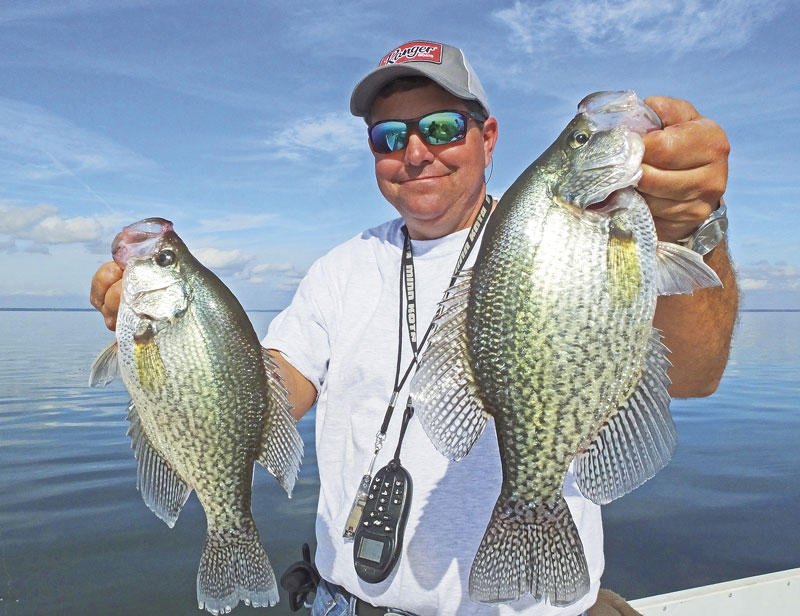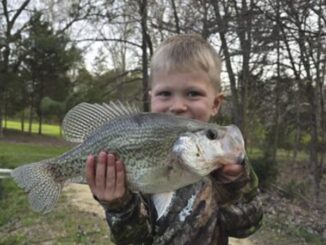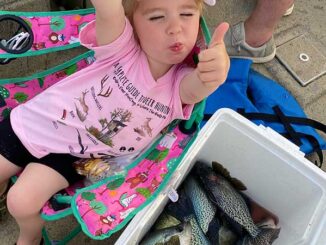
The big news at Santee Cooper is the striper fishing opened again on Oct. 1, after a 3½ month closure. The closed season is designed to reduce the stress-related mortality of stripers that would be caught and released during that time of year.
Striper fishermen should be excited about this October. Levi Kaczka, SCDNR Regional Biologist for the Santee Cooper lakes, said the status of the striper fishery remains excellent. And the outlook for the fall season is for plenty of stripers within the slot limit to be available to anglers.
Multiple methods are used by anglers to make limit catches during October. First, topwater schooling action is typically great early and late, with topwater lures often producing explosive strikes. Also, swimming baits and jigging spoons all provide great action. Plus, live bait is productive when the fish are not schooling on the surface.
Striper Guide Leroy Suggs, out of Blacks Camp (843-753-2231) on the Diversion Canal, said October is prime time for great striper action.
“The fall forage is abundant and following the bait is the key to finding stripers,” Suggs said. “Huge schools of baitfish roam both lakes Marion and Moultrie and the stripers follow.”
Lures with a bit of flash are lethal on October stripers and the Road Runner Bucktail Pro and Swim-N-Runner in 3/8- and ½-ounce sizes are highly effective lures for big fish.
Adding a plastic trailer to the bucktail can enhance the lure and is a good combination. These lures, along with spoons, produce excellent action on stripers.
Suggs said if he can get away from the crowds of other boats chasing stripers, his odds of hooking bigger fish improves.

Herring helps
“Multiple boats pursuing the same school of stripers impacts the opportunity to hook bigger fish,” he said. “If I can get on an isolated school of fish the catch rate of bigger fish improves.”
Suggs (910-995-1168) said stripers frequently school by size class. And if he hits a school of mostly smaller fish, he’ll change locations looking for keeper-sized fish. Also, by allowing his lures to drop deeper before retrieving he can often hook up with the larger fish. But sometimes larger stripers are absent from some schools.
Live bait is highly effective when stripers are marked on the graph suspended above the bottom and scattered over a large area. In this situation, drifting live blueback herring is an excellent technique.
Suggs said he can see the basic depth of suspended fish on the graph. And he’ll drift herring at that depth, or slightly shallower. Stripers will readily move shallower to attack a bait. He said a 2-ounce sinker above a 2-foot leader will usually keep the bait in the targeted zone.
The legal daily limit for Santee Cooper is three stripers per-angler and the slot limit for keeping fish is 23 to 25 inches. However one fish can be kept that’s greater than 26 inches as part of the three-fish creel limit. Note that fish in the 25- to 26-inch size (a/k/a the ‘no-fry’ zone) are not legal to keep. So measuring fish is a necessary practice.
Deep water crappie
The most consistent crappie fishing for October is working deeper drops where brush, logs, stumps and other woody cover exists. Crappie love woody cover and forage fish often cluster on these woody features providing increased incentive for crappie to linger around brush.
Veteran crappie fisherman Kevin Davis said October can generate huge slab-crappie action.
Davis said his primary target this month is brush piles along the base of a ledge in water from 20 to 35 feet deep.
“I tightline live minnows around the brushtop first, and then deeper along the edges until I find crappie,” Davis said. “Some anglers are highly effective using small jigs, or a jig-minnow combination, fished vertically or by casting. Depth control with this tactic is essential.
“I use my electric motor to position the boat over the top of the targeted cover so I can fish vertically most of the time,” he said. “I use rods with sensitive tips so I can detect the light bite typical of deep-water crappie.”
Davis said October often produces fat slabs in both lakes Marion and Moultrie. But the crappies tend to move as the forage travels.
“When targeting crappie on deep brush in October I’m patient and will fish an area thoroughly. But I’m ready to move if the action is slow,” he said. “At this time of year, crappie holding around deep cover are usually active. And once we find them, the action is wild.”





Be the first to comment